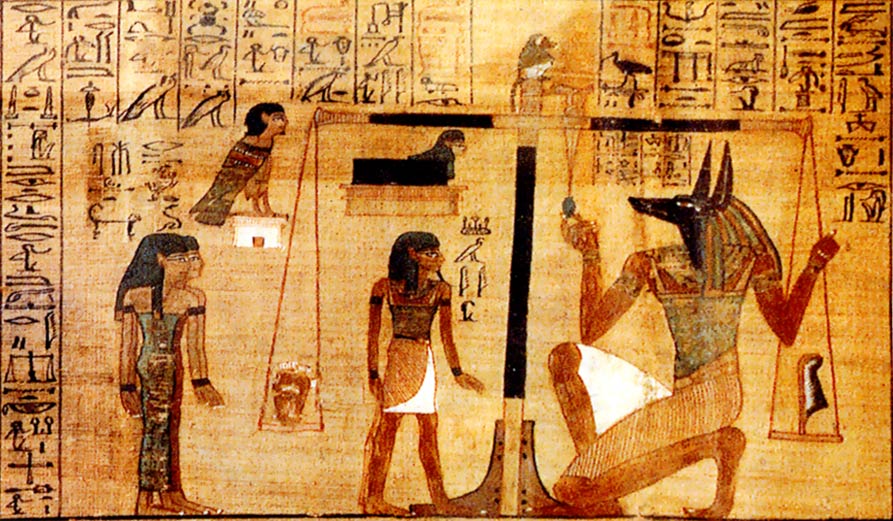 Submitted by ANTARA - Manager on
Submitted by ANTARA - Manager on

By No machine-readable author provided. FinnBjo~commonswiki assumed (based on copyright claims). - No machine-readable source provided. Own work assumed (based on copyright claims)., Public Domain, https://commons.wikimedia.org/w/index.php?curid=704591
Much of Egyptian symbology and wisdom was focused on the functionality and rules within those seven hidden dimensions. Egyptologists have misinterpreted most of the so-called "underworld" imagery, which actually was meant to symbolically model features and functionality within the hidden dimensions. One of the pivotal features of this universe, which operates from within the seven hidden dimensions, is what is commonly called karma. The Egyptian term Ka-Maat is the source of the later word karma. Maat symbolized truth and justice as the basis of universal order, ergo laws of the universe. Ka was their word for spirit, or one's moral essence, not the soul. The imagery showing Maat weighing hearts (one's desires) on a scale "in the underworld" is in fact a symbolic model showing that truth and justice (or the lack of it) determines one's karma, which determines the nature of future outcomes.
Some of the best-known ancient examples illustrating Maat addressed details between lives because they were found in tombs. But the symbology and associated philosophy purposefully provides a model of the rules (laws, wisdom) and functionality within the hidden spiritual aspects of existence (dimensions) that affect us at all times, day and night, alive or dead. Thereby, "Maat" "weighs hearts" within the hidden aspects of reality and this determines the nature of future outcomes within space-time. Thereby, the symbolism of ka and Maat serve as a model of the cause and effect system that we now know as karma, ergo ka-maat. This is also why truth and justice (Maat) were considered to be the source of universal order, ergo "the law." 1
The writings of Onchsheshonqy expressed the notion of karma to express the necessity of nonviolence and charity: “Thou shallt not inflict damage to a person for that person to not do the same to thyself. Thou shallt not sow fear among people for God to not sow fear in thyself. Because if someone promotes violence to prosper in life, God will take the bread out of your mouth”.
The obedience of that divine Law was fundamental for the stability of the pyramidal social structure in which the Pharaoh’s orders were followed throughout the society. Searching for peace, justice and harmony was the main objective of the government and the perception of justice as great, invariable, secure and stable permitted the harmony of the society.
Self-observation and moral courtesy were main virtues to an honest man thus leaders as Ptahhotep indulged in self-knowledge practices constantly. According to Amenompe’s writings on Ethics and Morality, the “serene way of speaking”, the “moderation of vivacity” and the “seriousness of the feature” were behavioral standards for that honest man. The search for those characteristics underlined the notion that the affable man could lead through all obstacles. 2
1. https://www.newswire.com/ancient-egyptians-modeled-the-advanced/111367
2. https://flavim.medium.com/egyptian-philosophy-i-a674f7325f72
- 535 reads